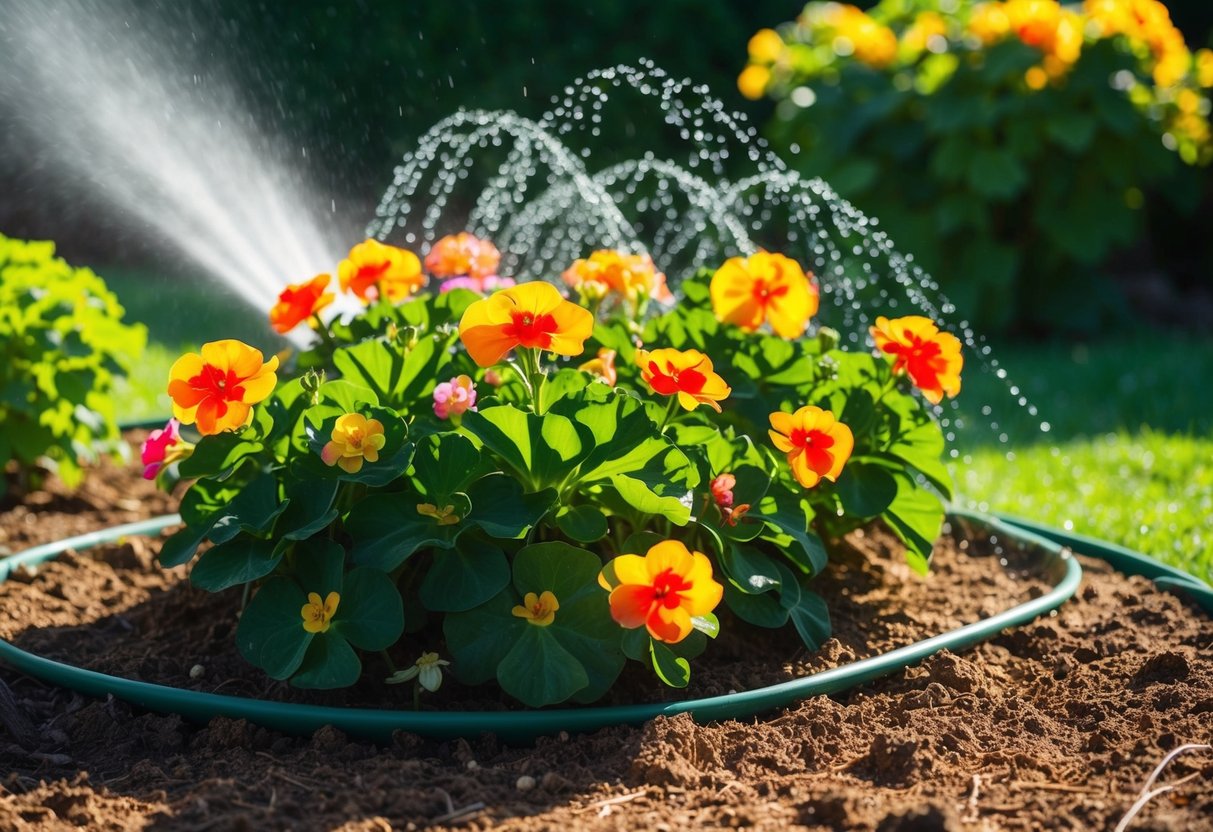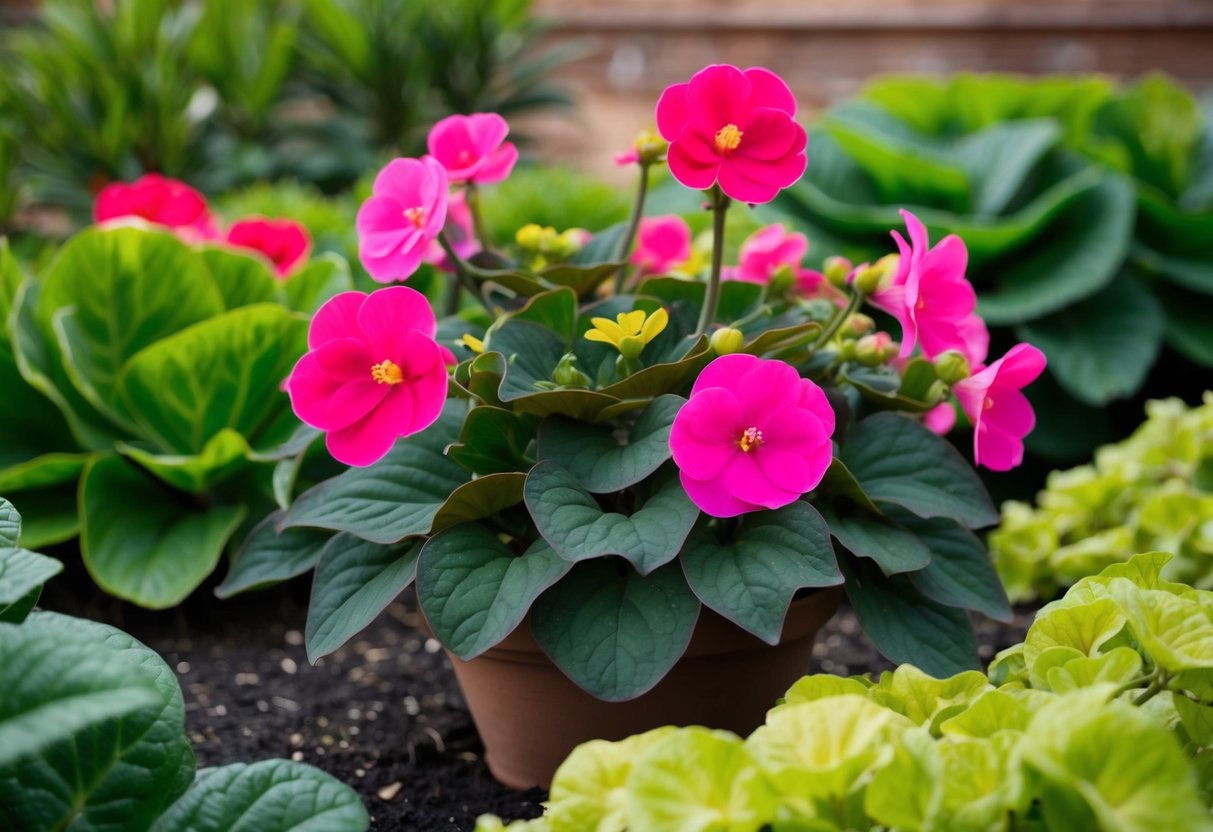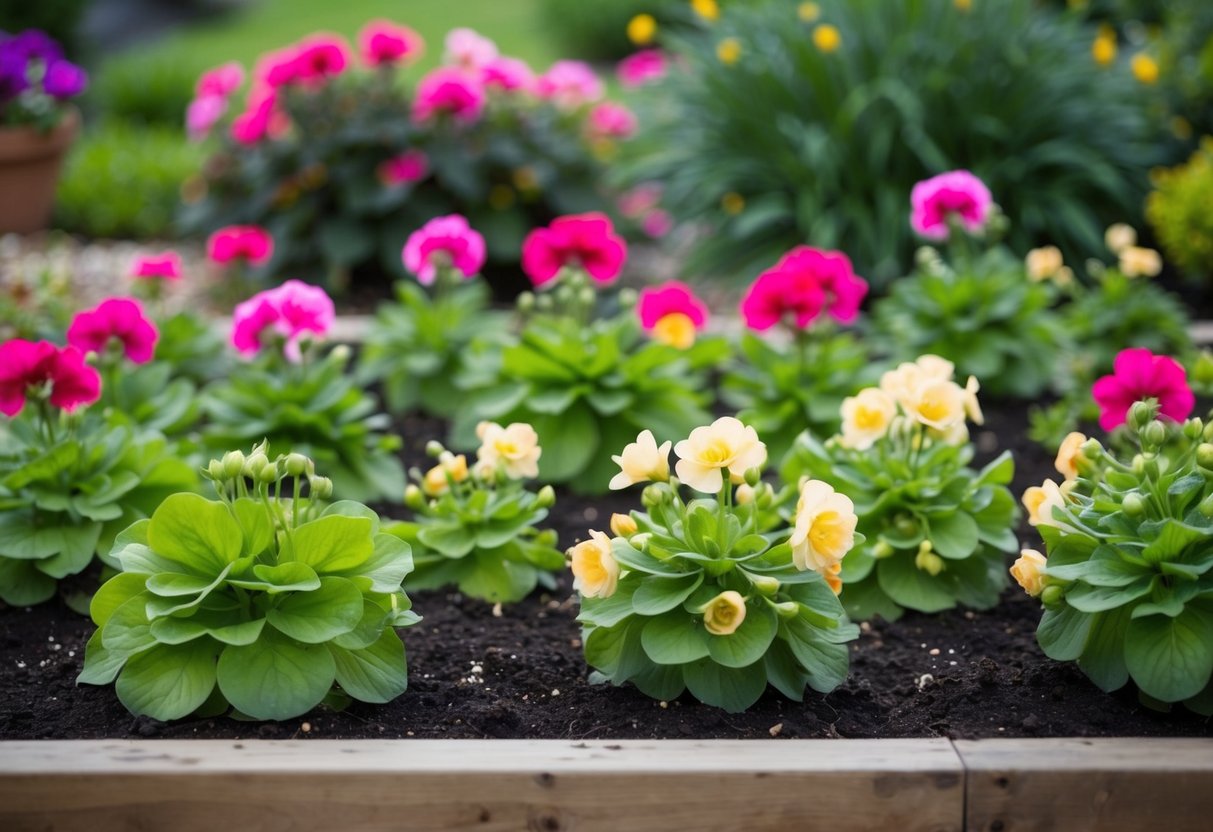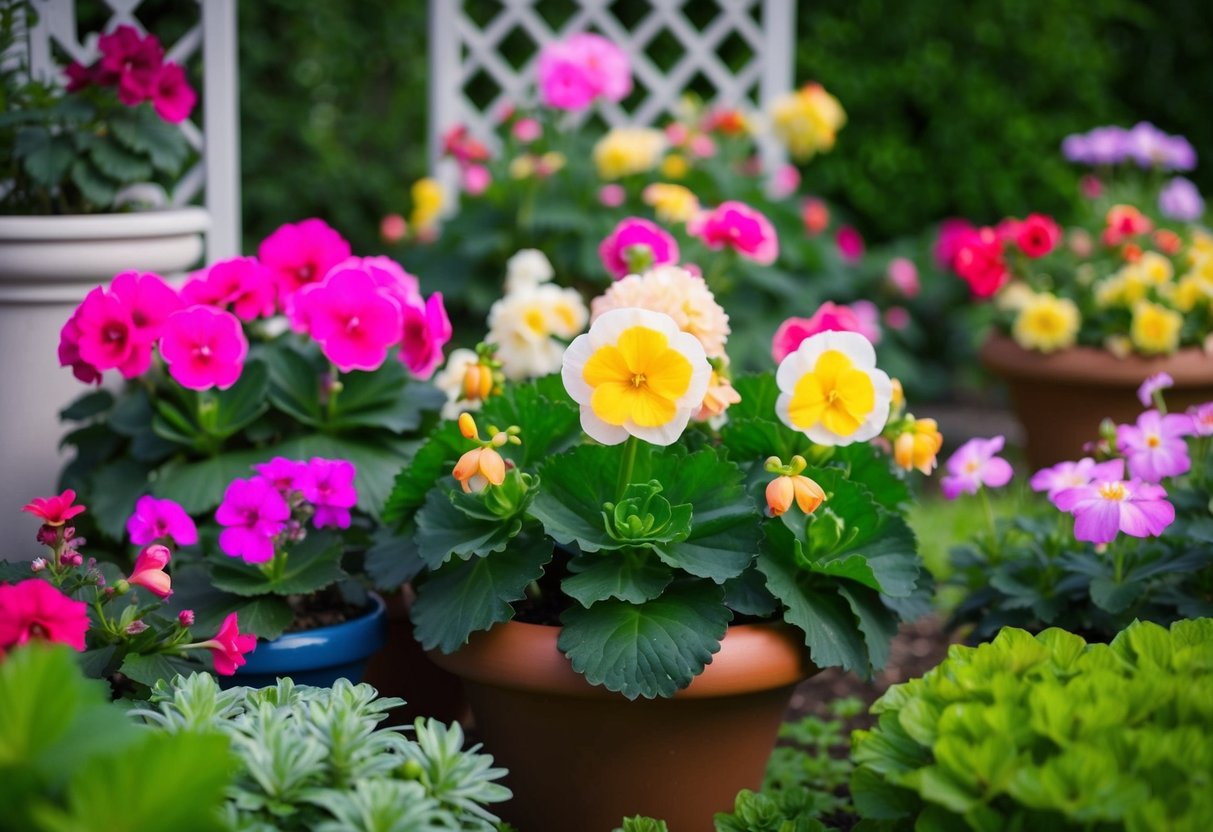Can Begonias Come Back Year After Year? Discover Their Perennial Potential
Begonias are a favorite for their vibrant colors and lush foliage in gardening. Understanding whether these beloved plants can return every year depends on their type. Most begonias are annuals, which means they won’t come back on their own each year. However, there are some exceptions.

Certain types of begonias, like hardy begonias or perennial varieties, can indeed survive the winter and grow again each year. If you’re in the right climate zone, particularly USDA Hardiness Zones 6-9, you may experience the joy of seeing your hardy begonias bloom anew each season. You might even consider saving tubers from tuberous begonias for replanting next year.
For begonias to thrive year after year, you need to give them the right kind of care, such as proper sunlight, water, and soil. With a little patience and effort, begonias can become a lasting part of your garden, rewarding you with beautiful blooms each summer.
Understanding Begonias as Perennials or Annuals

Begonias can be both annuals and perennials, depending on their type and growing conditions. Knowing the difference between these categories helps you decide how to care for your begonias and whether they will return each year.
Perennial vs. Annual Begonias
Perennial begonias can grow back year after year, especially in warm climates. Tuberous and rhizomatous begonias are common types that often act as perennials if protected from cold conditions. In cooler areas, these begonias may need to be brought indoors for the winter. Annual begonias, like wax begonias, typically complete their life cycle in one growing season.
In climates with mild winters, perennial begonias thrive outdoors, while annual begonias may need to be replanted every spring. Recognizing these types can guide your planting decisions and help you keep your garden vibrant.
Varieties and Lifespans
Begonias come in a range of varieties, each with its own ideal growing conditions and lifespan. Some, like tuberous begonias, have underground tubers that store nutrients and allow them to survive dormancy. Others, such as wax begonias, are usually treated as annuals in regions with harsh winters.
For successful gardening, it’s crucial to understand which category your begonias fall into. Knowing whether your begonias are rhizomatous, tuberous, or wax types helps you determine their proper care and lifespan. This way, you can enjoy their beauty every year without hassle.
Optimal Conditions for Begonia Growth

To help your begonias thrive year after year, focus on the right combination of soil, light, and climate. Each of these factors plays a crucial role in supporting healthy growth and blooming.
Soil and Watering Essentials
Begonias prefer well-draining soil to prevent waterlogging, which can cause root rot. Use a potting mix that’s rich in organic matter but allows excess water to escape. A mix containing peat moss, perlite, and sand works well.
Proper watering is essential. You should water them when the top inch of soil feels dry. Depending on your climate, this might mean watering once or twice a week. Humidity helps too, so placing a tray of water near your plants can increase it. Over-watering or keeping the soil too wet can harm your begonias.
Sunlight and Shade Requirements
Begonias do best with indirect sunlight. They’re sensitive to too much sun exposure, which can scorch their leaves. Position them where they can receive bright, indirect light for most of the day. For outdoor begonias, choose spots that provide shade during the hottest part of the afternoon.
Some varieties tolerate more direct sunlight, especially if they’re well-watered. You should try to gauge how much sun your specific begonia can handle. Shaded areas or those with filtered light, like under tree canopies, are excellent choices.
Climate and Frost Considerations
If you live in a warm climate, specific hardy begonias may survive winter outside. They do well in regions that fall within USDA Hardiness Zones 6-9. Make sure they’re protected from frost to prevent damage to their leaves and roots.
In cooler areas, it’s wise to bring them indoors before the first frost. Keep them in a warm, humid environment during the winter months. This can be achieved by placing them near a humidifier or on a tray with water and pebbles. You’ll have a better chance of them coming back strong in spring with this extra care.
Care and Maintenance for Healthy Begonias

Keeping your begonias thriving involves a combination of proper fertilizing, careful pruning, and vigilant protection against pests and disease. This ensures vibrant foliage and beautiful blooms.
Fertilizing and Feeding
To keep your begonias healthy, you should use a balanced fertilizer every two to four weeks. This helps them grow strong and produce colorful flowers. Look for a fertilizer with equal parts nitrogen, phosphorus, and potassium. If you prefer, organic matter like compost can also be a great choice.
Water your begonias consistently, ensuring the soil stays moist but not soggy. Too much water can lead to root rot, weakening the plant. Adjust the frequency based on the weather conditions and potting medium to find the right balance. Fertilizing regularly and correctly helps sustain lively growth and vivid blooms.
Pruning and Deadheading
Pruning your begonias is important for keeping them in great shape. Trim them back slightly to encourage bushier growth. Focus on removing any dead or damaged leaves. Deadheading, the process of removing spent flowers, can help your plant produce more blooms and stay neat. Simply pinch off the wilted flowers using your fingers or garden shears.
By regularly pruning and deadheading, air circulation improves around the plant, reducing the risk of disease. It also allows your begonias to focus their energy on producing new flowers and healthy foliage.
Protecting from Pests and Disease
Pest control is crucial to keep your begonias healthy. Common pests include aphids and spider mites. Regularly inspect your plants, especially under the leaves. A simple spray of water can dislodge many tiny pests. For more persistent problems, consider using insecticidal soap or neem oil.
Watch for signs of disease, such as discolored spots or powdery mildew. If you spot these, address them quickly to prevent spreading. Maintaining good air circulation and avoiding water on the leaves can help prevent fungal infections. With vigilant care, you can keep your begonias thriving and beautiful.
Propagation and Overwintering Strategies

Begonias can be propagated through cuttings, which is an easy way to multiply your plants. Additionally, overwintering strategies like storing tubers help sustain your begonias during colder months, allowing them to thrive again when the weather warms up.
Reproducing Begonias Through Cuttings
Propagating begonias using stem cuttings is a simple and rewarding process. Start in the growing season by choosing a healthy stem, about 3-4 inches long. Trim just below a node and remove lower leaves. Dip the cut end in rooting hormone to encourage growth.
Plant the cutting in a pot with well-draining soil. Keep it moist, but not overly wet, as begonias prefer damp conditions. Within a few weeks, roots should start developing. For rex begonias, you might see new leaves sprouting sooner.
This method is great for expanding your begonia collection or replacing older plants. It’s also a practical way to retain your favorite varieties and ensure they come back each year.
Storing Tubers During Cold Weather
Overwintering begonia tubers is crucial if you’re in a colder climate. After the first frost, carefully dig up the tubers. Cut back any remaining stems to about an inch and brush off excess soil without washing the tubers, to prevent rot.
Store them in a cool, dry place. Packing them in a box covered with peat moss or sand can help maintain proper moisture levels. This keeps them dormant and ready for spring planting.
Before the next growing season begins, check your tubers for signs of rot or disease. If any appear damaged, discard them to save your healthy begonias. Repotting the tubers as the weather warms will get them ready to begin a new cycle of growth.
Design and Aesthetic: Making Begonias Part of Your Garden

Incorporating begonias into your garden design can add vibrant blooms and lush foliage, enhancing both outdoor and indoor spaces. Explore how to use them effectively in landscaping and as charming houseplants.
Landscape Design with Begonias
Begonias are a perfect choice for enhancing your garden’s design. They thrive in shade, making them ideal for transforming dull and shady spots. You can use them as a bedding plant to create lively flower beds. Consider different types of begonias, like fibrous and rex begonias, for unique textures and colors. Mixing varieties can add depth and keep your garden interesting throughout the growing season.
Outdoor begonias, like the begonia grandis, offer drought-tolerant options with glossy green foliage. For a splash of color, try planting begonias in hanging baskets. They provide a cascading effect with vibrant blooms that stay lush even in shaded areas. Angel wing begonias are excellent for creating height and drama in your garden. Consistent plant care will keep begonias blooming from spring to fall.
Indoor Begonias as Houseplants
Bringing begonias indoors offers a chance to enjoy their beauty year-round. Indoor begonias like rex begonias make excellent houseplants due to their striking leaf patterns and colors. They suit containers well and can be placed in areas with indirect light. This way, they complement your interior decor while adding a natural touch.
Planting begonias indoors requires attention to humidity and light. You can use plastic wraps initially to maintain warmth and moisture. Once established, begonias are fairly easy to care for. Ensuring adequate humidity and avoiding direct sunlight helps them thrive. For continuous blooms, fertilize regularly to promote vibrant flowering. Enjoy begonia flowers as they bring life and color to various parts of your home.






